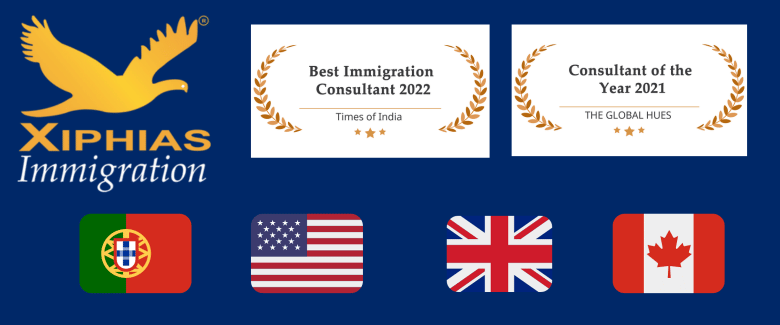US immigration authorities are ambitious to issue 280,000 green cards in 2022

JULY 28, 2022 03:12:42 PM
The United States Citizenship and Immigration Services (USCIS) facing pressure to grant 280,000 employment-based visas by the completion of the fiscal year. Due to a record excess of available green cards, immigration officials faced a challenge in issuing all of the remaining green cards this year. In 2021, more than 66,000 employment-based visas were lost due to backlogs caused by the epidemic and a record number of US work visa applications. In 2022, USCIS will have to deal with an even greater burden. According to the US immigration office, 280,000 green cards must be processed in the current fiscal year compared to 262,000 in 2021. However, according to USCIS, the agency is “well-positioned” to grant every visa that is eligible before the fiscal year closes on September 30.
Employment-Based Immigrant Visas for the United States
Under the provisions of U.S. immigration law, approximately 140,000 employment-based immigrant visas are made available to qualified applicants each fiscal year. There are five preference categories for employment-based immigrant visas.
E1 visa, also known as the Treaty Trader Visa, is a non-immigrant visa for people who do business with the US. Trade must take place between the US and an E1 visa country with which the US has a trade and investment treaty.
There are three sub categories of E1 Visa:
Persons with extraordinary abilities in the sciences, arts, education, business, or athletics. Applicants must have extensive documentation demonstrating sustained national or international recognition and acclaim in their fields of expertise. Such applicants are not required to have specific job offers if they are entering the US to continue working in fields where they have exceptional ability. Such applicants can apply to the USCIS using Form I-140, Immigrant Petition for Alien Worker.
Internationally recognised outstanding professors and researchers with at least three years of teaching or research experience. Applicants in this category must be coming to the US to pursue tenure-track or comparable research positions at a university or other higher education institution. The prospective employer must provide a job offer, and an Immigrant Petition for Alien Worker, Form I-140, must be filed with the USCIS.
Multinational managers or executives who have spent at least one of the previous three years working for a U.S. employer’s overseas affiliate, parent, subsidiary, or branch. The applicant’s previous employment outside of the United States must have been in a managerial or executive capacity, and the applicant is returning to work in a managerial or executive capacity. The prospective employer must provide a job offer, and an Immigrant Petition for Alien Worker, Form I-140, must be filed with the USCIS.
The EB-2 visas are available to professionals with advanced university degrees and individuals of exceptional ability in the sciences, arts, or business.
Foreign nationals who fall into one of five preference categories are eligible for a U.S. immigrant visa and green card through employment. The majority of professional-skilled applicants are classified as either employment-based second preference (EB-2) or employment-based third preference (EB-3).
Within this category, there are two subgroups:
Professionals with an advanced degree (more than a baccalaureate degree), or a baccalaureate degree and at least five years of progressive experience in the profession. Individuals with exceptional talent in the sciences, arts, or business.
Person with exceptional ability means having a level of expertise far beyond what is typically found in the sciences, arts, or business.
For a EB-3 Visa applicant, a potential employer must submit an authorised Immigrant Petition for Alien Worker, Form I-140. For all such personnel, a Department of Labor-approved labour certification is typically necessary. The yearly global cap of employment-based immigrant visas is 28,6% for skilled workers, professionals, and unskilled workers (other workers), plus any unused visas from the Employment First and Second Preference categories. Within this category, there are three subcategories:
- The term skilled workers, refers to those whose jobs, which are not temporary or seasonal, require at least 2 years of training or work experience.
- Professionals are those who work in fields that need at least a baccalaureate degree from an institution of higher learning in the United States, or the foreign equivalent.
- Other workers, often known as unskilled workers, are capable of filling non-temporary or seasonal occupations that do not require more than two years of training or experience.
The EB-4 visa is a work-based green card for special immigrant religious workers. It is typically intended for members of a non-profit religious denomination in the United States, but the category can include a wide range of applicants: Broadcasters, International Organisation employees, Armed Forces personnel, Panama Canal employees, Physicians, Retired NATO-6 employees If a NATO-6 employee dies, his or her spouse and children are still eligible. An employer must file Form I-360, Petition for Amerasian, Widow(er), or Special Immigrant, in order to petition for an employment-based fourth preference (EB-4) immigrant. However, there are some circumstances in which you, the employee, may petition on your own behalf (known as self-petitioning).
The EB-5 Immigrant Investor Program, which was established by Congress in 1990 to stimulate the US economy through job creation and capital investment by foreign investors. On March 15, 2022, President Biden signed the EB-5 Reform and Integrity Act, which was included in the Consolidated Appropriations Act, 2022, creating new requirements for the EB-5 immigrant visa category and the Regional Center Program. Immigrant visas are authorised through the Regional Center Program until September 30, 2027.
Each year, 10,000 Green Cards for permanent residency are made available to qualified immigrant investors across the country. The Act requires a capital investment of $1.05 million in all areas except rural and high unemployment areas, also known as “targeted employment areas” (TEA), where a $800,000 investment is permitted. The investment must be maintained for a minimum of two years in order to create ten full-time jobs.
Applicants who are approved will be granted conditional green cards for two years. The green card conditions are then removed at the end of two years after demonstrating to US immigration authorities that the jobs were indeed created or maintained. The transition from conditional to regular green card status has no effect on the green card holder’s ability to work in the United States. Individual applicants must have a net worth greater than USD 1 million and provide proof that their funds are legal. Applications must be submitted on the prescribed forms, along with the required fees and documentation. In addition to the usual personal documentation, medical reports, vaccination records, certified police clearance certificates, and any court records must be provided. Applicants usually receive their first conditional green cards within 18 to 24 months. Two years later, an application to convert the conditional green card to a regular green card is submitted.
To Know more about the Application Process and your Eligibility
Please get in touch with our expert consultants at +91-9019-400-500 or email us at [email protected]



